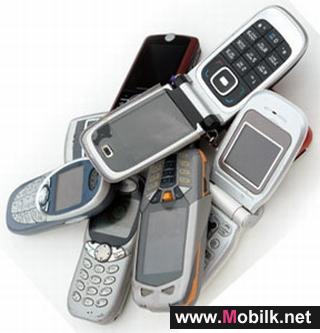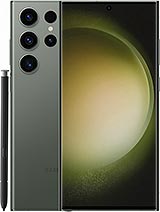Mobile Phone Emissions
Half a billion people worldwide now use a mobile phone, with more signing up every day, so it was inevitable that the scare-stories would start. In the 1960s people worried about the X-rays coming from their colour TVs. These days you can hardly turn the page of a tabloid newspaper without discovering a new story, or some artfully drawn diagram demonstrating how microwaves from mobiles heat up the brain.
Cancer?
Twice in the late 1990s, experiments with animals have actually suggested that there is a link between mobile phone emissions and DNA damage or cancer, and these were widely reported in the press. However, a huge number of other experiments have shown nothing of the sort. In fact, one of the strangest results was published in April 1999, where memory loss was studied in volunteers with microwave emitters strapped to their heads. There was no difference in memory performance when the emitter was switched off or on, but bizarrely, when the devices were switched on and broadcasting a signal mimicking an analogue phone, the subjects answered questions 4% faster. Experiments with nematode worms have also shown that larvae exposed to overnight microwaves wriggle less but grow 5% faster. As yet, nobody has any idea how to explain these results, but they don't seem to reflect any sort of cell damage.
Various labs around the world have subjected various types of mice to varying levels of microwave radiation. Some labs have reported damage, others cancerous activity, others no effect, and still others that cancer formation is actually inhibited. However, when these various labs try to reproduce each other's results (the cornerstone of experimental proof), they get different results. One suggestion is that there is no effect, and that these results are merely the random variation caused by the study of something that just isn't there.
Furthermore, current theories about radiation and tissue structure simply don't allow a mechanism for damage by low-power microwaves. Although ionising radiation such as X-rays and gamma-rays can break the chemical bonds in DNA (and thus cause cancer), this high-frequency radiation is a far cry from microwaves, which come from the far red end of the spectrum and simply don't have the energy to break up chemical bonds.
Microwave Your Head
The other popular fact reported in the press - and one which sounds popularly plausible if you don't think too deeply about it - is that your phone's emissions heat up your ear, just as a microwave oven heats up food by vibrating the water molecules within it. Most of us who have long conversations on our mobiles can testify to the effect, but the radiation generated by a phone is only a thousandth of the power of that generated by a microwave oven. The reason that your ear heats up is because your phone is packed with circuitry and batteries that get warm with prolonged use.
Shielding
Even though it seems pretty clear that cell damage cannot be caused by cellphones (although the scientific jury is still out), the experiments with memory loss and nematode worms do seem to suggest that there is still some sort of effect, whether it is disruptive or not. To this end (or, to be more cynical, cashing in on media hysteria), several companies have produced after-market shielding devices for mobile telephones. The early models were simply radiation-proof boxes that completely encased the handset. These simply made it harder for the radiation to get out of the phone, but since the phones need to transmit to communicate with the network, on-board software simply assumed that you were standing under a bridge and stepped up the power until the signal could get through, the only net result being that the batteries drained faster.
Modern shields are more sophisticated, but still suffer from the problem of bad reception. A 1999 experiment by New Scientist magazine showed that where it was possible to walk 4.6m into a test room with an unshielded phone before the signal was lost, shielded phones typically could only get as far as 1.3m. Similar experiments showed that the best way of minimising radiation to the head while maximising reception was to use a hands-free set, with the phone worn on the belt or in a pocket, although of course this merely moved the radiation exposure to some other part of the body.
Still, with the World Health Organisation launching a millennial 3000-person study into cellphone effects in Europe, engineers are continuing to work on the problem. Researchers at the University of Surrey have come up with an intelligent antenna that not only works out where your head is and directs the signal away from it, but which also actively identifies the direction of the strongest incoming signal and squirts its own emissions directly back to the nearest mast. The researchers hope that this technology, which apart from shielding the head also greatly increases battery life, will be used in the next generation of mobile phones expected in 2002.
Perhaps by then we will also have found a way to reduce the voice emissions of that guy opposite you on the train.
New Research
The UK consumer association 'Which?' have carried out experiments with the hands-free sets and have apparently found that, rather than keeping the radiation source away from your head/ear and thus minimising damage, hands-free sets actually increased exposure to potentially damaging radiation because they act like antennae and channel radiation to the ear piece thus increasing the amount of radiation to the ear area.
Research & Studies
Making Information and Communication Technology (ICT) a central part of efforts to decrease CO₂ (Carbon Dioxide) output has the potential to reduce..
Research & Studies
New research from Ericsson (NASDAQ:ERIC) has suggested that mobile penetration is outpacing births rates across the Middle East. According to the..
Research & Studies
Thanks to mobile broadband, an ever-increasing number of people and devices are connected. This phenomenon provides more opportunities for operators,..

 Vodafone Oman
Vodafone Oman Emirates Telecom
Emirates Telecom  Ooredoo Om
Ooredoo Om Ooredoo Qa
Ooredoo Qa stc Bahrain
stc Bahrain Orange Egypt
Orange Egypt Mobily
Mobily Zain Jo
Zain Jo omantel
omantel STC
STC Emirates Du
Emirates Du Asiacell
Asiacell Etisalat Egypt
Etisalat Egypt  Telecom Egypt
Telecom Egypt jawwal
jawwal Orange Jo
Orange Jo Umniah
Umniah Zain Sa
Zain Sa Bahrain Batelco
Bahrain Batelco Zain Bh
Zain Bh Wataniya palestine
Wataniya palestine Kuwait Viva
Kuwait Viva  Zain Kw
Zain Kw Vodafone Qa
Vodafone Qa MTN Syria
MTN Syria Syriatel
Syriatel Sabafon
Sabafon Zain Iq
Zain Iq MTN Yemen
MTN Yemen Ooredoo Kw
Ooredoo Kw Vodafone Egypt
Vodafone Egypt  Samatel
Samatel Huawei
Huawei Samsung
Samsung MOTOROLA
MOTOROLA Alcatel
Alcatel Lenovo
Lenovo LG
LG Nokia
Nokia Sony Ericsson
Sony Ericsson HTC
HTC BlackBerry
BlackBerry Siemens
Siemens Acer
Acer Sony
Sony Asus
Asus VK
VK APPLE
APPLE BenQ-Siemens
BenQ-Siemens Sagem
Sagem Eten
Eten HP
HP Panasonic
Panasonic Amoi
Amoi Toshiba
Toshiba Sharp
Sharp Sonim
Sonim Bird
Bird Mitac
Mitac Philips
Philips Vertu
Vertu Pantech
Pantech Micromax
Micromax Maxon
Maxon Haier
Haier I-mate
I-mate Gigabyte
Gigabyte I-mobile
I-mobile Kyocera
Kyocera BenQ
BenQ Microsoft
Microsoft Telit
Telit Connect
Connect Sendo
Sendo SEWON
SEWON Mitsubishi
Mitsubishi DELL
DELL NEC
NEC Thuraya
Thuraya Neonode
Neonode Qtek
Qtek Be
Be Bosch
Bosch Palm
Palm MWG
MWG XCute
XCute Fujitsu Siemens
Fujitsu Siemens WND
WND INQ
INQ O2
O2 Innostream
Innostream Benefon
Benefon Google
Google


















